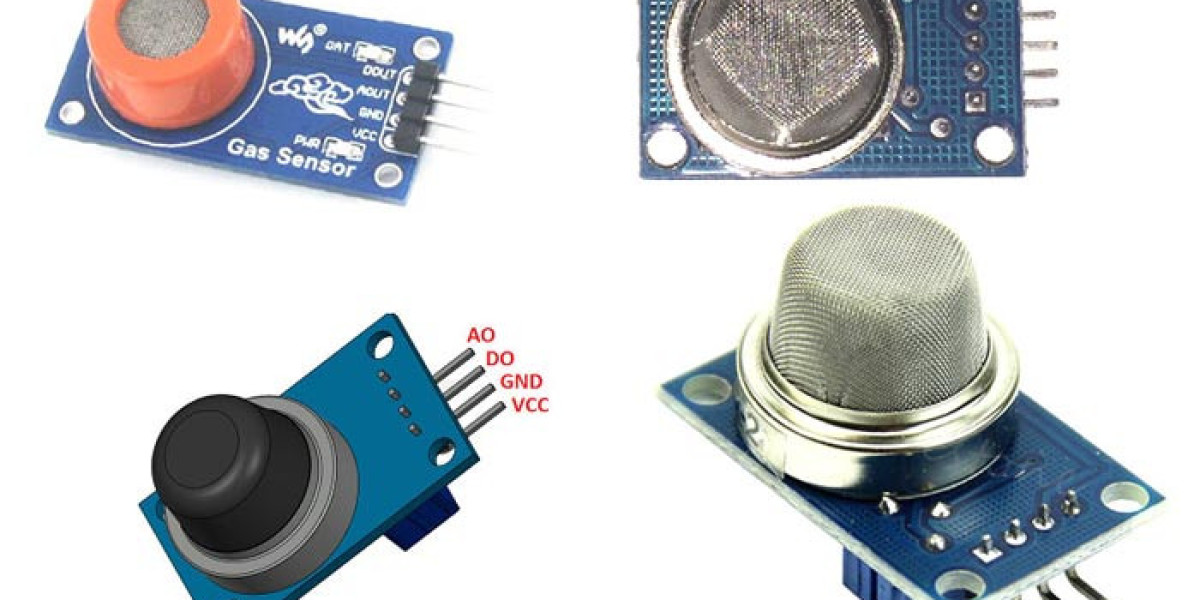Market Research Future Insights
According to MRFR analysis, The Gas Sensor industry is projected to grow from USD 1.51 Billion in 2022 to USD 2.76 Billion by 2030, exhibiting a compound annual growth rate (CAGR) of 8.14% during the forecast period (2022 - 2030).
It is a tool for determining the quantity or presence of gases. The Gas Sensor Market shows a change in the resistance of the material used in the sensor, which is utilised to measure the output voltage, based on the background gas concentration. There is a gas concentration found The kind is determined by this change in voltage value. It can identify volatile substances, including gases and air quality. The sensors can also monitor and detect gas concentrations, and they can convert a gas analyte's attention into an electrical or electronic signal. These are employed in a variety of sectors, including those related to energy, aerospace, defence, and medicine.Applications for installing gas sensors include tracking chemical reactions, combustion engine exhaust, and air pollution.
The key factors driving the market are the expanding usage of gas sensors in the defence and military sectors, the rise in demand for gas sensors in consumer electronics, and the favourable government laws surrounding the use of gas sensors. During the forecast period, they will drive the market ahead. The optical gas sensor market is expected to increase significantly. Several industries, including biomedical diagnostics, ocean Mars exploration, and climate change, utilise the laser spectroscopy gas sensing technology. The novel multi-gas sensor system includes optical modules to measure the ambient air quality, data gathering, and system control. The laser absorption spectrometer sensor is effective at identifying ambient CH4 and CO2 gases using a single detector with no time lag.
Regional Analysis:
Region-wise, the global gas sensor market has been divided into North America, Europe, Asia-Pacific, and the rest of the world. The market in North America, at USD 370.1 million, is the largest. At 10.0%, Asia-Pacific has the fastest growing market share.
The use of drones to view volcanoes and investigate the chemistry of volcanic plumes using ultralight sensor systems has recently received official approval from Europe. Volcanic sites are explored using the C1 drone with a measurement system since they are otherwise impossible to access. The method also permits higher measurement frequency for using gas measurements to track volcanic activity.
Under the new European Drone Regulation, the C1 drone is formally approved for a C1 certification in the European Economic Area, which includes the EU plus Norway, Iceland, and Liechtenstein. Standard parameters that are frequently measured include SO2 CO2 concentrations and many meteorological parameters.
Key Players
The Key Players of the Global Gas Sensor Market are City Technology Ltd (UK), Dynament(UK), AlphaSense (UK), Amphenol Corporation (US), Bosch Sensortec GMBH (Germany), AMS AG (Austria), SenseAir AB (Sweden), NEW COSMOS ELECTRIC CO., LTD.(Japan), Membrapor AG (Switzerland), Sensirion AG (Switzerland) and MSA (US), among others.
Gas sensors are devices that detect the presence of gases in the environment. They are used in a variety of applications, including air quality monitoring, industrial safety, and medical diagnostics. The increasing number of health and safety regulations by the governments of different countries is driving the demand for gas sensors. For example, the European Union has set strict regulations for the emission of harmful gases from vehicles. This is driving the demand for gas sensors in the automotive industry.
The rising air pollution levels are also driving the demand for gas sensors. Gas sensors are used to monitor the levels of harmful gases in the air, such as carbon monoxide, nitrogen dioxide, and sulfur dioxide. These gases can cause respiratory problems and other health issues.
The gas sensor market is segmented by type, product, technology, and application. By type, the market is segmented into wireless and wired gas sensors. The wireless gas sensors segment is expected to grow at a faster rate during the forecast period due to the increasing demand for remote monitoring of gas levels.
By product, the market is segmented into oxygen/lambda sensor, carbon dioxide sensor, carbon monoxide sensor, NOx sensor, methyl mercaptan sensor, and others. The carbon monoxide sensor segment is expected to grow at a faster rate during the forecast period due to the increasing demand for gas sensors in the automotive industry.
By technology, the market is segmented into electrochemical, semiconductor, catalytic, infrared (IR), solid state/MOS, and photo-ionization. The electrochemical sensor segment is expected to hold the largest market share during the forecast period due to its high sensitivity and selectivity.
By application, the market is segmented into industrial safety, environmental monitoring, medical diagnostics, and others. The industrial safety segment is expected to grow at a faster rate during the forecast period due to the increasing demand for gas sensors in the oil and gas, chemical, and manufacturing industries.
Related Reports:
Bring Your Device (BYOD) Market
CMOS and sCMOS Image Sensor Market
Conclusion:
Gas sensors play a critical role in ensuring safety and efficiency in various industries, from manufacturing plants to smart cities. With increasing environmental concerns, stringent regulations, and the demand for connected solutions, the gas sensors market is witnessing significant growth. Technological advancements, such as IoT integration and nanotechnology, are revolutionizing the capabilities of gas sensors, offering enhanced monitoring, analysis, and automation. As we move towards a more connected and sustainable future, gas sensors will continue to be indispensable in safeguarding our environments and creating safer and smarter communities.







